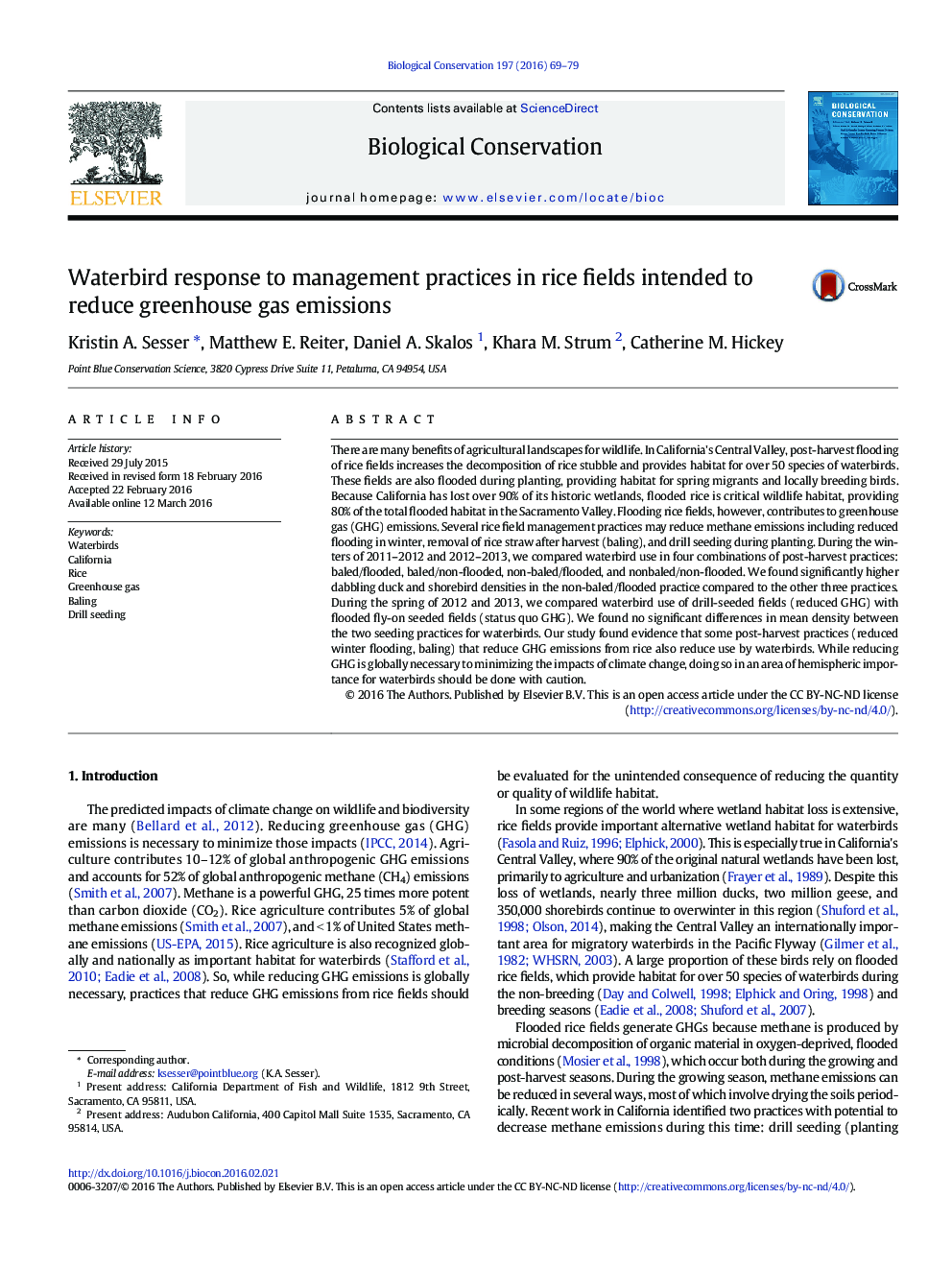| کد مقاله | کد نشریه | سال انتشار | مقاله انگلیسی | نسخه تمام متن |
|---|---|---|---|---|
| 6298392 | 1617904 | 2016 | 11 صفحه PDF | دانلود رایگان |

- Some rice management practices that reduce GHG also diminish habitat for waterbirds.
- Flooded, non-baled rice fields had the highest densities of ducks and shorebirds.
- Dabbling ducks and shorebirds were most abundant in flooded rice fields in winter.
- Duck and shorebird densities were similar between rice seeding practices.
There are many benefits of agricultural landscapes for wildlife. In California's Central Valley, post-harvest flooding of rice fields increases the decomposition of rice stubble and provides habitat for over 50 species of waterbirds. These fields are also flooded during planting, providing habitat for spring migrants and locally breeding birds. Because California has lost over 90% of its historic wetlands, flooded rice is critical wildlife habitat, providing 80% of the total flooded habitat in the Sacramento Valley. Flooding rice fields, however, contributes to greenhouse gas (GHG) emissions. Several rice field management practices may reduce methane emissions including reduced flooding in winter, removal of rice straw after harvest (baling), and drill seeding during planting. During the winters of 2011-2012 and 2012-2013, we compared waterbird use in four combinations of post-harvest practices: baled/flooded, baled/non-flooded, non-baled/flooded, and nonbaled/non-flooded. We found significantly higher dabbling duck and shorebird densities in the non-baled/flooded practice compared to the other three practices. During the spring of 2012 and 2013, we compared waterbird use of drill-seeded fields (reduced GHG) with flooded fly-on seeded fields (status quo GHG). We found no significant differences in mean density between the two seeding practices for waterbirds. Our study found evidence that some post-harvest practices (reduced winter flooding, baling) that reduce GHG emissions from rice also reduce use by waterbirds. While reducing GHG is globally necessary to minimizing the impacts of climate change, doing so in an area of hemispheric importance for waterbirds should be done with caution.
Journal: Biological Conservation - Volume 197, May 2016, Pages 69-79